Telsa are one of the world’s biggest purchasers of batteries through their partnerships with manufacturers like Panasonic, LG and CATL. Their endless hunger for more cells is unlikely to be satiated anytime soon, as demand for electric cars and power storage continues to rise.
As announced at their Battery Day keynote, Tesla has been working hard on a broad spectrum of projects to take battery technology to the next level in order to reach their goal of 3 TWh annual production by 2030. One of the most interesting aspects of this was the announcement of Tesla’s new tabless 4680 battery, which will be manufactured by the company itself. Let’s take a look at what makes the 4680 so exciting, and why going tabless is such a big deal.
Roll Up, Roll Up
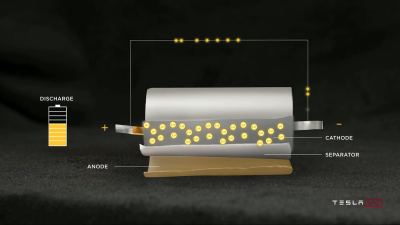 A diagram showing a typical cylindrical cell design, with tabs to connect the anode and cathode to the cell casing.
A diagram showing a typical cylindrical cell design, with tabs to connect the anode and cathode to the cell casing.
Tesla are somewhat unique among electric car makers in that they’ve resolutely stuck to using cylindrical cells in their battery packs, where other manufacturers have largely used prismatic designs. Beginning with the venerable 18650 popular with laptop manufacturers and flashlight builders, Tesla later moved on to using larger 21700 batteries, with the bigger form factor meaning each cell had greater capacity. To construct these cells, long, thin sheets of anode and cathode material are laid on top of each other with a seperator material in between, and then rolled up into a “jellyroll” to fit inside the cylindrical body. The anode and cathode each have a small tab, generally at the center of the rolled up sheets, which pass power to the terminals on the outer case of the battery.
These small tabs hold back cylindrical cells in a multitude of ways. They act as a bottleneck for current flowing in and out of the cell, as despite the huge area of the anode and cathode, all current flowing in and out of the battery must go through a pair of tabs just a few millimeters wide. Electrons from the outer areas of the jellyroll must travel a significant distance to reach the cell terminal, with an electrical path length up to 250 mm in 21700 cells. This greater path length means more resistance, with a corresponding effect on thermal performance. Additionally, the tabs frustrate efforts to effectively produce anode and cathode sheets at speed, with production machinery having to stop and start repeatedly to deal with the protruding features.
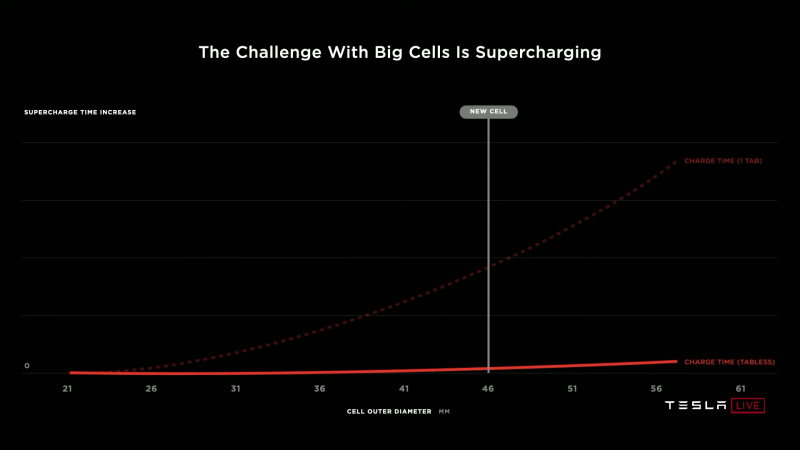 Tesla modelled the impact of cell size on charging times, which is a major problem with classical batteries using tabs. The new tabless design helps solve this issue thanks to improved thermal performance.
Tesla modelled the impact of cell size on charging times, which is a major problem with classical batteries using tabs. The new tabless design helps solve this issue thanks to improved thermal performance.
Tesla had previously made gains in performance when shifting from 18650 cells to the larger 21700 design, but efforts to further increase cell size hit a brick wall. While larger cells can store more energy and deliver cost savings in production, thermal issues meant that charge times and discharge rates would be negatively impacted. Larger cells meant longer path lengths, with the higher resistance meaning less power output per cell and slower charging. Even with Tesla’s fast charge technology, many still consider electric cars to charge too slowly, so this was one tradeoff that wasn’t worth making.
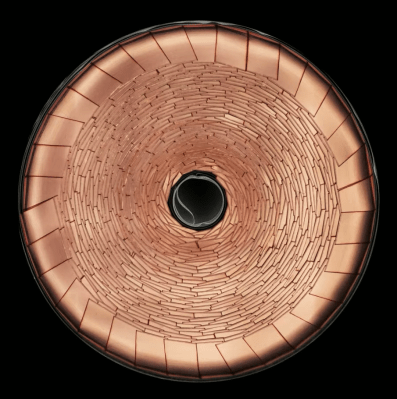 The “shingled spiral” of the jellyroll in a tabless battery. Instead of one tab in the center of the jellyroll, the entire base enables current to flow to the active material.
The “shingled spiral” of the jellyroll in a tabless battery. Instead of one tab in the center of the jellyroll, the entire base enables current to flow to the active material.
Enter “tabless” batteries. Rather than having a small battery tab attached to the anode and cathode respectively, the entire anode and cathode foils are laser-patterned and processed to have what are essentially many tiny tabs all along their length. Replaces the step of manually attaching separate tabs later in the manufacturing process.
When the anode, cathode and separator are all rolled up together, these many smaller tabs flatten out to form a “shingled spiral”, creating a much larger contact area between the active battery material and the casing. This means that the path length for electrons to travel is much reduced; Tesla quotes as much as a 5 times reduction compared to previous designs. This is due to the fact that electrons can now move directly towards the battery terminal, rather then having to take a more roundabout path to the center of the sheet first to reach the single-tab connection.
The end result is the 4680 cell, named for its 46 mm diameter and 80 mm length. This is a departure from the five-digit nomenclature, but nobody at Tesla could figure out why 18650 cells have the trailing zero, so the company eliminated it in the new cell’s designation. The new cells are claimed to contain 5 times the energy earlier designs due to their larger size. Even better, Tesla claim they can deliver up to 6 times the power, due to the reduced electrical path length of tabless construction enabling better thermal performance. Estimates are that the switch to 4680 cells in Tesla’s automotive packs could result in a range gain of as much as 16% — an impressive number given the automaker’s already impressive numbers in this area. For example, the upcoming Model S Plaid claims to have a range of 520 miles using the 4680 cells.
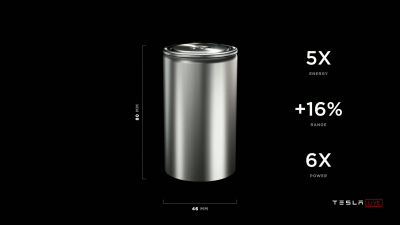 The new 4680 cell from Tesla. It follows the naming scheme of the 18650, except dropping the trailing zero as nobody at the company could determine what it meant.
The new 4680 cell from Tesla. It follows the naming scheme of the 18650, except dropping the trailing zero as nobody at the company could determine what it meant.
The new design brings production benefits, too. By laser-patterning the anode and cathode for direct connection, rather than attaching separate tabs, the materials can be handled through continuous roll processing, not dissimilar from techniques in paper production. This promises huge gains in production speed, with machinery able to move at continuous high speeds rather then having to continually accelerate and decelerate for tab attachment to each anode and cathode sheet. Tesla’s goals to produce more batteries to meet demand are not practically achievable with current production techniques, so improvements in processing and production speed are key to solving this problem. This will also lead to reductions in cost, which is a major part of the company’s effort to produce a more accessible electric vehicle at the $25,000 price point.
These new cells, with their greater energy density and high power output, would appeal to a huge market of hackers and makers. However, the continual theme throughout Tesla’s keynote was that they simply can’t source enough batteries to meet their needs as it is. We suspect that it will be several years before tabless batteries hit the open market, as Tesla keeps its entire supply for its own internal use. Other manufacturers will likely scramble to develop similar technology due to the gains on offer, but this will take time, and in the meantime, individuals wanting the best cylindrical cells will have to wait for new Teslas to show up in their local wrecking yards.
The tabless technology announcement was just one piece of Tesla’s Battery Day announcements. Work is ongoing to make gains in other areas, such as anode and cathode chemistry, and production techniques, in order to meet the company’s lofty goals of increased battery production to meet worldwide demand. If electric transportation and Powerwall grid storage are to truly change the world, projects like these will have to pay off — otherwise we simply won’t have the batteries to put in the cars!
Article Source and Credit hackaday.com https://hackaday.com/2020/10/05/teslas-new-tabless-batteries-unlock-new-levels-of-performance/ Buy Tickets for every event – Sports, Concerts, Festivals and more buytickets.com
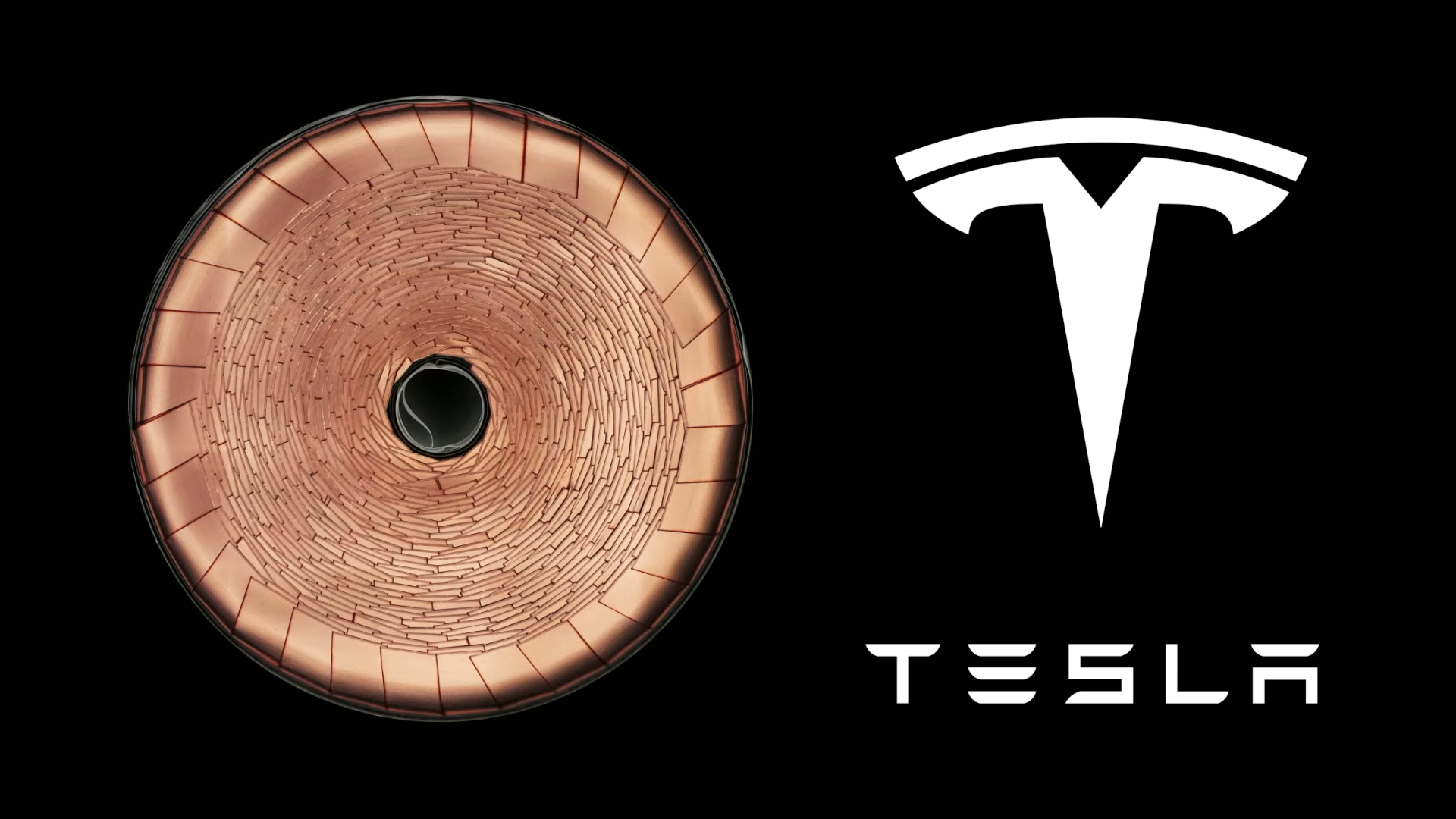
Leave a Reply
You must be logged in to post a comment.